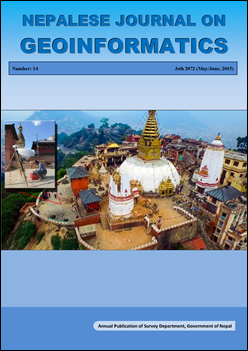Land Records Information Management System
DOI:
https://doi.org/10.3126/njg.v14i0.16970Keywords:
e-Government, Land Information System, Land Records Information Management System, Architecture, Service DeliveryAbstract
The land administration services are being provided using traditional methods and processes. The record keeping system is mainly based on manual system so far. There is increasing need for efficient and effective delivery of land administration services. Government organizations use Information and Communication Technology to increase efficiency and effectiveness in the service delivery. E-Government can bring improvement in efficiency, easy availability and accessibility of service and information to the citizens, business organization, professional users as well as government organizations. The main aim of LRIMS is to automate the land transaction related functions of Land Revenue Offices (LROs) based on different land transactions process requirements.
The system is adherence to NeGIF and GEA, availability of intranet facility, provision of web-based system, and data security. System modules show the modules needed for LIS. The implementation status of LIS in Nepal is in initial stage. The old system architecture does not support the e-Government model. The system modules show the modules needed for LRIMS. The system modules help in delivering service efficiently. The three tier system architecture follows all three models of e-Government (G2G, G2B and G2C) and reduces corruption, increase access to information and improve data quality.
Nepalese Journal on Geoinformatics, Vol. 14, 2015, Page: 26-31




